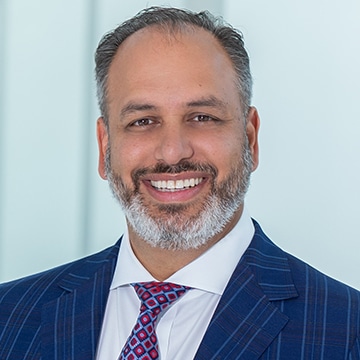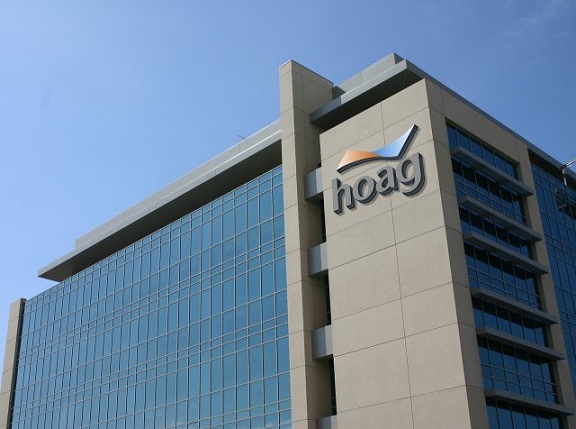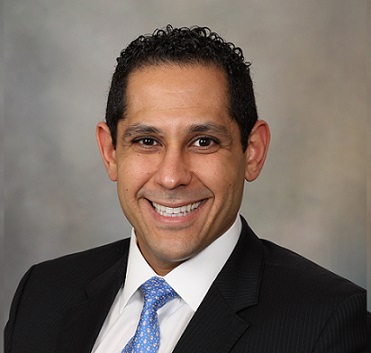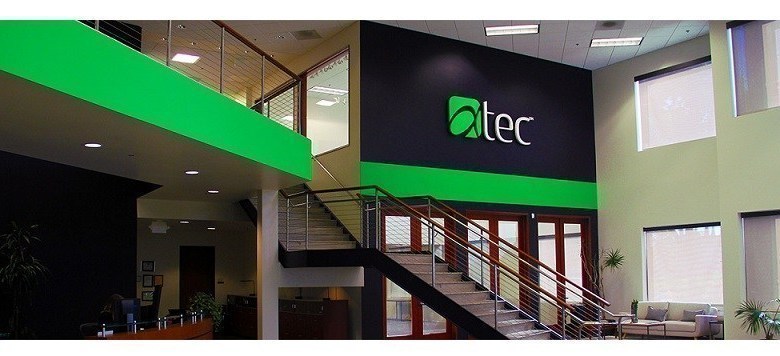Elizabeth Hofheinz, M.P.H., M.Ed.
Patients, Payors, Providers, and Health Systems all share a common end goal but the path to get there is somewhat blurry. Helping to bring clarity and progress to musculoskeletal (MSK) market transformation around the country these days is a pioneering group known as HOPCo—Healthcare Outcomes Performance Company—an entity dedicated to improving quality and decreasing cost of care in the musculoskeletal space by aligning key stakeholders. They specialize in removing the disparate medical silos from the negotiation table while making sure everyone comes out as winners.
Healthcare delivery shouldn’t be an ongoing litany of skirmishes.
Wael Barsoum, M.D. is President & Chief Transformation Officer of the Phoenix, Arizona-based HOPCo. Formerly CEO and President of Cleveland Clinic Florida, Dr. Barsoum, is devoted to the idea of creating integrated healthcare delivery platform systems where all stakeholders are aligned to deliver high value care to the patients in the community.
Dr. Barsoum: “Most of us are accustomed to negotiations where there is a winner and a loser, at HOPCo we have reframed the structure of such discussions by delivering a new model to forward-thinking hospitals, practices, and payors. This structure allows for all stakeholders, most importantly patients, to win.”
But first, to the negotiating table
Dr. Barsoum: “Hospital CEOs naturally become concerned when their orthopedic surgeons move cases to ambulatory surgery centers (ASCs) due to the adverse impact it has on the facility’s bottom line. Rather than having individual conversations amongst each respective hospital system and practice, we should promote candid discussions between key stakeholders to discuss the overall impact to quality improvement and cost reduction.”
HOPCo applies this vast knowledge and the experience of former CEOs, COOs, and health insurance companies’ executives and business leaders to strategically layer on various strategies to the HOPCo model, aligning physicians, hospitals, and practices in a way that incentivizes all parties to deliver value-based care to drive better outcomes.
The model
Dr. Barsoum: “HOPCo is the only vertically integrated musculoskeletal delivery platform that is equipped with a medical economics vertical. HOPCo is able to effectuate significant change by taking full capitated risk for the entire musculoskeletal spend, which represents one-third of all ICD-10 codes, essentially equivalent to 20-25% of the healthcare spend in a community. Our robust medical economics capabilities enable us to consistently bend the MSK cost curve while improving outcomes for patients. This is the ultimate way to deliver value in a musculoskeletal community. In addition, HOPCo acts as an MSO to help manage physician practices, allowing them to have a liquidity event while still owning their practices. In addition to full population management, HOPCo is one of the largest orthopedic convenors in the country.”
How it works for hospitals and health systems
When it comes to hospital service line transformation, HOPCo brings all of its management expertise to the table.
Dr. Barsoum: “We can manage a health system’s entire MSK service line, including marketing, operating room efficiency, supply chain, physician alignment, their employed physician model, etc. We also partner with them in managing specialty hospitals, or even a hospital within a hospital, in order to provide a ‘high touch’ patient and provider experience. In doing so, HOPCo develops a musculoskeletal ecosystem increasing market share, lowering costs, and improving quality of care. Fundamentally, HOPCo’s focus is eliminating variations in care delivery and creating community “virtual institutes” that incentivize the highest quality through literature supported care. We assist in building out clinical care pathways in collaboration with local physicians to use as the standard of care in that market. This results in high value care for the patients in that community and alignment of providers in the delivery of all MSK care, both surgical and non-surgical.”
How it works for medical groups and practices
Dr. Barsoum: “One of the key areas we focus on for practices and health systems is operational management, which may include supply chain management as an example. We routinely partner with practices—150 to date—in order to optimize their supply chain. As the pandemic has added more constraints in this realm, effective management of supply chain is crucial, now more than ever before. By aligning medical groups and practices with the cutting-edge healthcare technology, proprietary software tools and decision support platform that HOPCo offers, those entities are able to realize higher patient satisfaction scores, lower costs, improved outcomes and increased operational efficiency.”
Regardless of whether it’s a hospital or a group practice, the HOPCo process is far from a top-down experience.
Dr. Barsoum: “The physicians and healthcare systems we work with are very engaged. Instead of mandating anything, we work with our partners in a very collaborative manner. This is where we found success in other communities. HOPCo is a physician-led organization. Its CEO is an orthopedic surgeon. Its president is an orthopedic surgeon, and its three vice chairs are orthopedic surgeons. HOPCo’s goal is to allow the community to benefit from the collective knowledge of the communities’ healthcare providers and leaders to create a musculoskeletal ecosystem that is unrivaled.”
Physicians who hit their targets are recognized.
Dr. Barsoum: “We have a quality incentive program that rewards physicians when they do well, especially in areas of quality metrics such as OR turnover time, adherence to clinical pathways, reduced readmission rates, etc. Because we know that many orthopedic surgical cases are decreasing in the inpatient hospital setting, we engage hospital administration so that they are part of the solution—and don’t feel like they are just left ‘holding the bag.’ This is accomplished through shared savings in a clinically integrated network that drives the right care in the right setting. Doing what is right for the patient is ultimately what is right for the hospital and the community. Frequently, physicians and patients prefer ASCs, so we offer hospitals the opportunity to partner with HOPCo in ASCs. We then ‘backfill’ the hospital with the appropriate inpatient volume so that all parties can win.”
How it works for payors
Dr. Barsoum: “We believe in the good intentions of those on the payor side. From their perspective, their role is to provide the highest value plan possible. To accomplish this, HOPCo works with payors to save them money through setting appropriateness of care criteria, reductions in readmissions and complications, as well as reductions in outliers so that the following year they can pass any savings on to patients. By moving more market share to the payor through better benefits for lower prices, the patient is the ultimate winner in the form of lower premiums and better outcomes, and the payor wins by gaining market share”
They accomplish this through the creation of clinically integrated networks that align providers, health care systems, and patients around clinical care pathways, and quality and cost reducing dashboards.
Dr. Barsoum: “If the outcomes at one site are better, then the volume will naturally shift to that site. We encourage hospitals to participate in our clinically integrated networks. If a hospital recognizes that some of the cases being moved from the system are going to an ASC, then the hospital benefits from that shared savings by participating in the clinically integrated network.”
And the proof that it’s working?
Dr. Barsoum: “In Arizona we took full global MSK risk on 114,000 Medicare Advantage members, which resulted in a net savings of $20 million in year one and $32 million in the subsequent year. These savings were distributed to our hospital partners, payors, and participating physicians.”
Another indicator of HOPCo’s successful model at work is the substantial reduction in ED visits.
Dr. Barsoum: “In our partner hospitals, we have been able to decrease post-operative emergency department visits by 50%, double the contribution margin, and increase market share by 31% on average within 2 years”
So why is their model working?
Dr. Barsoum: “One reason is that we follow appropriate care criteria. If I’m taking risk on paying for someone’s knee replacement and the patient clearly needs a knee replacement, you can either exhaust conservative options, even those destined to fail, or simply perform the procedure. If you are not in a risk sharing environment, then you have to document that more conservative treatments have failed—and there is a huge cost to those unnecessary nonsurgical treatments.”
“To be clear, conservative treatments are frequently the right answer, but not always. Let’s say a patient presents with lower back pain and is neither a candidate for an MRI nor surgery but undergoes both. In our model, the scheduling physician will be negatively affected due to unsubstantiated testing and treatments being used. Inversely, delaying necessary care results in an equivalent bonus penalty. Our proprietary software, into which we have invested nearly $100 million, makes it easy to obtain real-time information on the doctor and/or hospital level. At that point, we can coach physicians on how to approach such a case going forward.”
With HOPCo’s tools and robust infrastructure, practices and hospitals are able to truly transform the MSK market. By designing a model that works with the community, they are able to drive down cost of care while improving quality of care. Hospitals, payors, and physicians alike benefit from the shared cost savings associated with HOPCo’s model.








